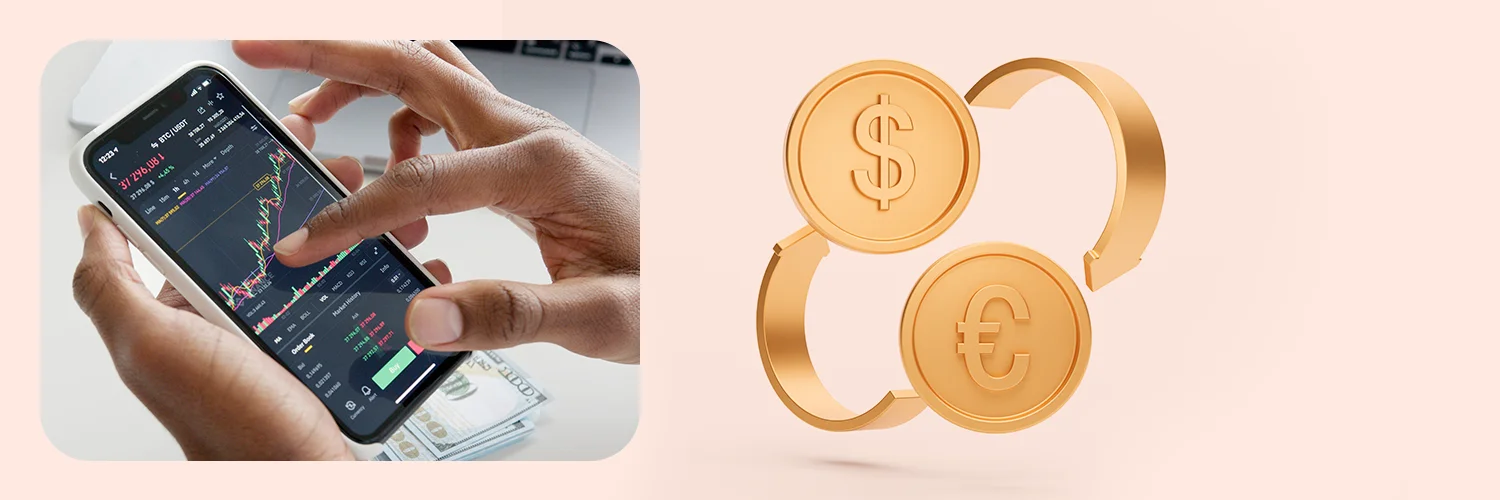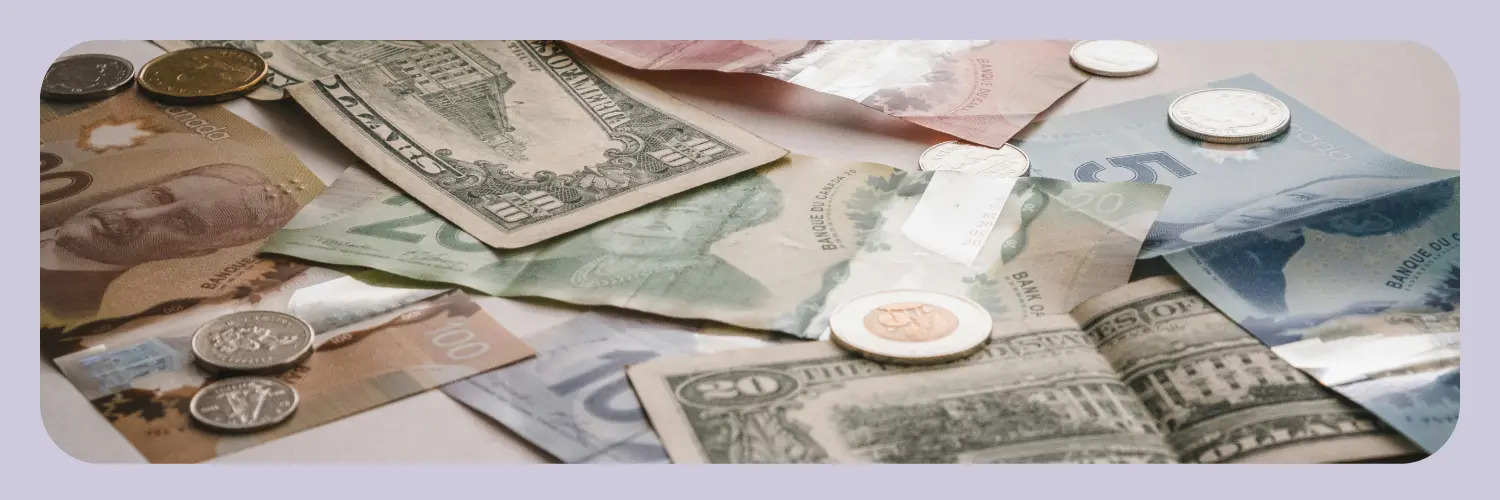
What Is Foreign Exchange Rate? Demystifying Currency Values
What Is Foreign Exchange Rate? Demystifying Currency Values
For example, if the exchange rate between the US Dollar (USD) and Euro (EUR) is 1.20, it means 1 USD is equal to 1.20 EUR. Foreign exchange rates fluctuate based on various factors like economic indicators, geopolitical events, and market demand, impacting international trade, investments, and the overall global economy.
Types of Foreign Exchange Rate Systems
Having understood ‘what is the foreign exchange rate’, it is important to understand its various types. It is worth noting that different countries employ diverse currency exchange systems.
1. System of Fixed Currency Rates
- Countries set a fixed value for their currency compared to another currency or commodity. This value doesn’t change easily, providing stability.
- Imagine India fixes 1 Indian Rupee (INR) to 0.014 US Dollar (USD). No matter what, 1 INR will always be equal to 0.014 USD.
2. Floating exchange Rate System
- Currency values go up and down based on supply and demand in the market. They are flexible and change freely.
- If India adopts a floating rate, the value of 1 INR might change from 0.014 USD to 0.015 USD based on market demand, reflecting a flexible value.
3. Managed Float Exchange Rate System
- Currency values can fluctuate, but governments step in occasionally to keep them stable, balancing between fixed and flexible systems.
- In this scenario, India’s currency might fluctuate between 0.014 USD and 0.015 USD. The government could step in occasionally, buying or selling currency to maintain stability, preventing drastic changes.
You can also read: Types of Foreign Exchange Markets in India
Significance of Foreign Exchange Rate in Global Currency Markets
Foreign exchange rates are essential in fostering worldwide investment and trade. They offer a way to exchange one currency for another, enabling enterprises and private individuals to do international business.
- Foreign exchange rates significantly influence international trade, affecting the cost of goods and services between countries.
- Investors consider these rates when making international investments, impacting financial portfolios.
- Exchange rates serve as indicators of a country’s economic health and stability, influencing inflation rates and economic policies.
- Central banks use these rates to maintain economic stability, adjusting interest rates and monetary policies accordingly.
- Exchange rates are vital for businesses engaged in international trade, shaping profit margins and competitiveness.
- They impact trade balances, influencing a country’s imports and exports and, subsequently, its overall economic health.
- Understanding and monitoring these rates are crucial for businesses, governments, and investors for informed decision-making in the global economy.
Determination Of Foreign Exchange Rate
Calculating the exchange rate involves computing it based on the supply and demand for different currencies in the foreign exchange market. This section discusses how it also depends on the market volatility and inflation rates.
Several factors influence the valuation of currencies against each other on the global market, thereby affecting foreign exchange rates. The following elements play a significant role in determining these rates:
Currency Dynamics: Supply and demand dynamics apply to currencies like any other asset.
Interest Rate Differentials: This is one of the critical factors affecting foreign exchange rates; the variance in interest rates among nations impacts the rates.
Purchasing power parity and inflation rates: Higher inflation reduces a currency’s purchasing power, which causes it to depreciate.
Economic and political factors: The prices of currencies are influenced by economic indices like GDP growth, rate of unemployment, and fiscal policies.
Market Sentiment and Expectations: Expectations and suppositions about potential changes in the exchange rate might affect today’s exchange rate.
The implications of foreign exchange rates on various stakeholders: Changes in currency rates significantly impact many different stakeholders:
Exporters and Importers: One of the significant effects of changes in the foreign exchange rates impacts both the price of exports and the expense of imported items.
International travellers: Currency exchange rates affect travellers’ buying capacity. Travelling abroad can be more expensive with a more robust home currency than a weaker one.
Multinational corporations: Multinational corporations benefit from worldwide operations and trade elaborately. Many sectors affecting cost and revenue include manufacturing, customer service, sales, etc. Therefore, exchange rate changes directly affect how relative costs and income are valued in multinational corporate operations.
Investors and speculators: Another effect of the changes in foreign exchange rates is that they present chances for entrepreneurs and speculators. This means they can make money by investing in foreign coins or derivatives if they successfully forecast currency movements.
Fluctuations in foreign exchange rates can impact the following factors:
Trade balances: The difference between a country’s imports and exports can be significantly affected by the exchange rate. For example, if a country’s currency appreciates relative to another currency, the exports become relatively more expensive for buyers, impacting demand and exports. Imports, on the other hand, may become cheaper, which would allow for more demand.
Inflation rates: An example of how the exchange rate can impact the inflation rate is when a country’s currency depreciates, it may lead to higher import prices which essentially means that it takes more of a country’s currency to purchase the same amount of goods. This is called imported inflation which can affect the inflation in the country itself.
Profitability: Companies that export to countries with a weaker domestic currency may benefit from more profits than those with a stronger domestic currency. Foreign exchange rates can affect the cost of production and the attractiveness of products overseas.
The following factors may affect exchange rates:
- Banking costs and Commissions: Various banks and financial organisations impose differing expenses and commissions for currency exchange transactions.
- Retail rates vs Interbank Rates: Retail rates are offered to individuals, while Interbank Rates are the rates at which institutions exchange currencies among themselves. After understanding the foreign exchange rate, we now know that exchange rates can shift during the day due to market volatility and timing.
- Timing and market volatility: Due to the dynamic changes that the exchange rate markets undergo, it is essential to stay vigilant while keeping track of the rates. Exchange rates can change multiple times daily, and the market is volatile, so keeping track may be challenging.
Understand forex rates better. Get our zero forex card for seamless international transactions!
Frequently Asked Questions
1. How often do foreign exchange rates change, and what are the sources of foreign exchange?
Due to changes in the market and other economic and monetary considerations, foreign currency rates can regularly alter and fluctuate throughout the day. The sources are Export gifts, Investment and Tourism.
2. How are spot exchange rates determined?
The foreign exchange market determines spot rates. These rates represent the currency’s current market value concerning another currency. Spot rates are also determined by the supply and demand of different currencies, country interest rates, etc.
3. How do you use the exchange rate?
Exchange rates can be utilised in several ways. It can be used in currency conversion if you travel abroad. Exchange rates also play a vital role in international trade and investing for those individuals who want to participate in the foreign exchange market. These are just a few among the myriad examples of how you use the exchange rate.
4. How to calculate the inverse exchange rate?
The inverse exchange rate is taking the reciprocal of the exchange rate between two currencies. It expresses one unit of the base currency in terms of another currency. To calculate the inverse exchange rate, you take the reciprocal of the exchange rate. That is one divided by the exchange rate.
5. How do you find the exchange rate?
There are multiple ways in which you can find the exchange rate. You can refer to financial situations like banks or credit unions to provide this information. Their websites will also display the current exchange rate. You can also refer to financial service websites to understand the exchange rate.







